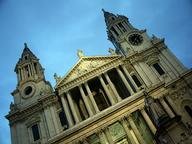Quiz Answer Key and Fun Facts
1. What is the origin of the term "coroner"?
2. King Richard I's proclamation formalizing the role of the coroner was issued in September 1194. When were coroners first documented in England?
3. What was the primary motivation behind the proclamation of September 1194 and the formalization of the coroner's role?
4. The medieval coroner's overall responsibility was to record events that he observed, usually to assess the value of property and any fines involved. What were these records called?
5. What was the General Eyre?
6. Which of the following persons would be most likely to hold the office of coroner?
7. The medieval coroner was required to personally investigate any occurrence of homicide or sudden death. Which of the following was NOT a reason that the coroner had this role?
8. Did the medieval coroner perform autopsies?
9. How did an individual become a coroner?
10. What was a murdrum fine?
11. Another very important county official was the sheriff. Was the coroner a subordinate of the county sheriff?
12. What was a deodand?
13. The coroner was responsible for cases when a fugitive chose to "abjure the realm". What was this practice?
14. Guilt or innocence was often determined in the Middle Ages by the accused undergoing an ordeal. The coroner was required to attend all ordeals and record the results. Which of the following was NOT a form of ordeal?
15. Which of the following were duties for the medieval coroner?
Source: Author
pshelton
This quiz was reviewed by FunTrivia editor
Exit10 before going online.
Any errors found in FunTrivia content are routinely corrected through our feedback system.
